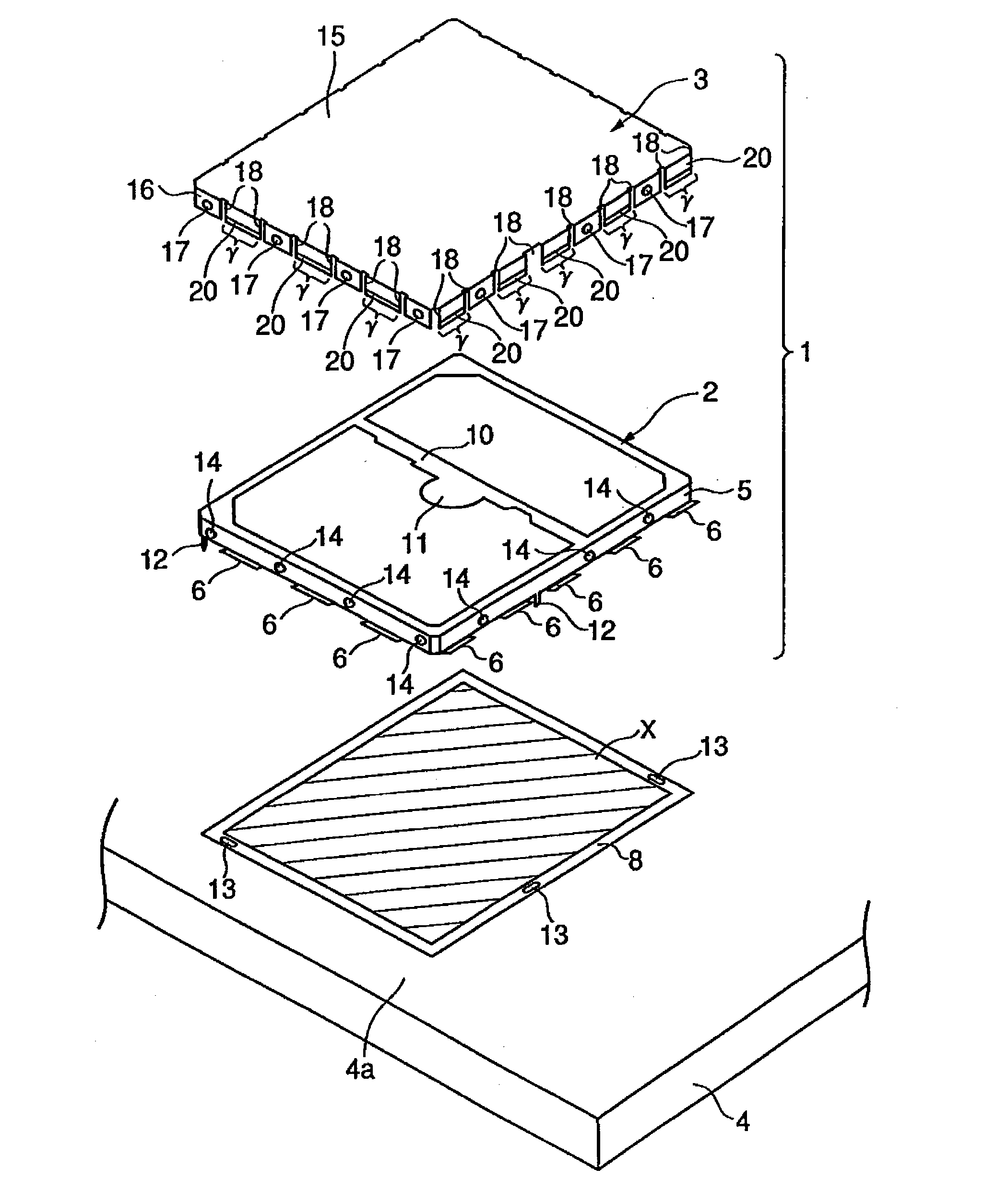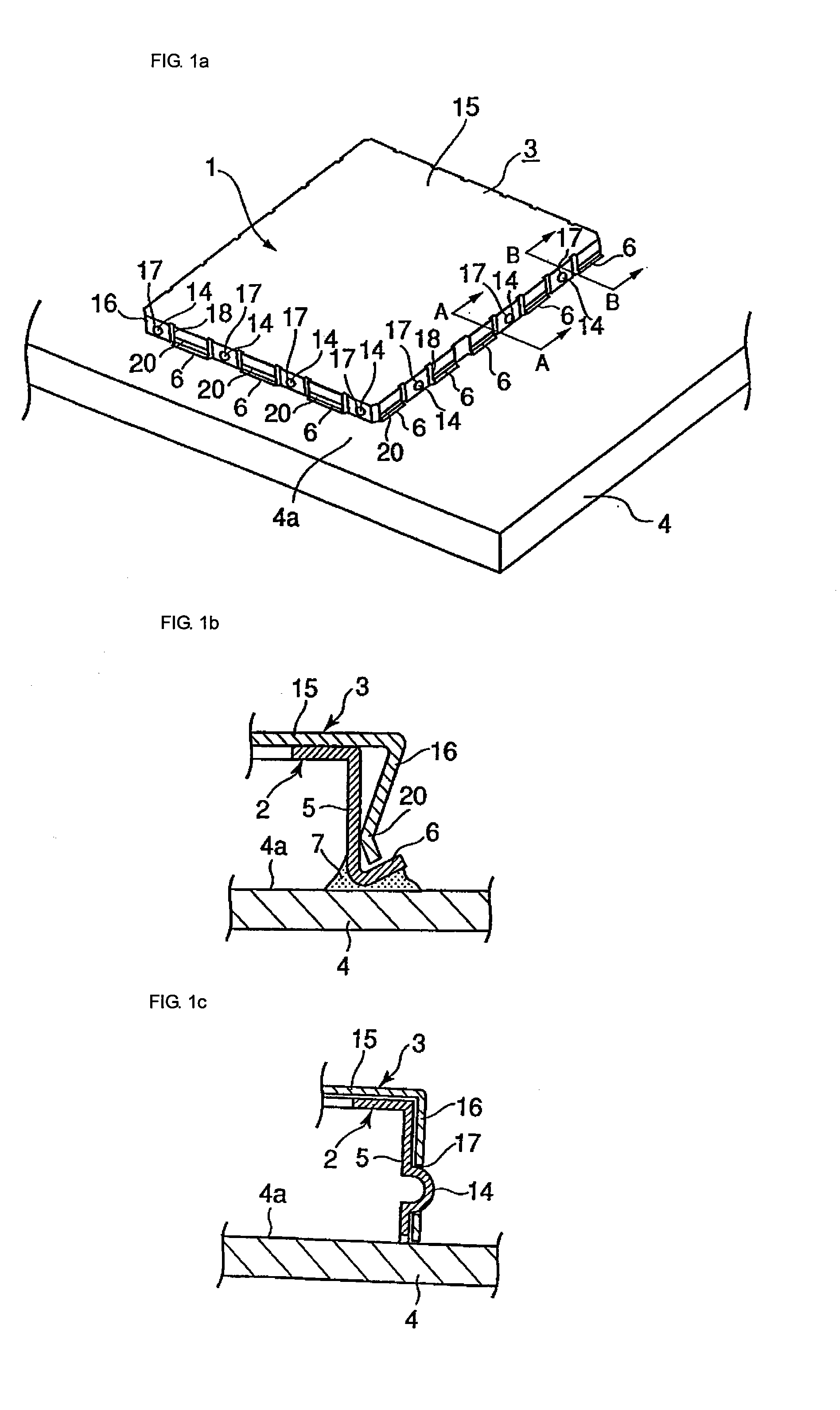Shield Case
a shield case and shield technology, applied in the field of shield cases, can solve problems such as solder inspection, and achieve the effects of preventing the joint strength between the joint terminal and the circuit board surface from being decreased, increasing the joint strength, and reducing the resistance of solder
- Summary
- Abstract
- Description
- Claims
- Application Information
AI Technical Summary
Benefits of technology
Problems solved by technology
Method used
Image
Examples
Embodiment Construction
[0045] Embodiments of the present invention will be described below with reference to the drawings.
[0046]FIG. 1a is a schematic perspective view showing a shield case according to an embodiment of the present invention, along with a circuit board, FIG. 1b is a schematic cross-sectional view taken along line A-A in FIG. 1a, and FIG. 1c is a schematic cross-sectional view taken along line B-B in FIG. 1a. FIG. 2 schematically shows an exploded state of the shield case. A shield case 1 of this embodiment includes a frame 2 formed of a conductor and a cover 3 formed of a conductor that will be described below.
[0047] The frame 2 includes a peripheral wall 5 that surrounds a predetermined shielded portion (a diagonally shaded portion shown in FIG. 2) X on a surface 4a of a circuit board 4. The peripheral wall 5 has joint terminals 6 provided at a lower edge thereof so as to be in contact with the circuit board surface 4a. The joint terminals 6 extend outward from the lower edge of the pe...
PUM
 Login to View More
Login to View More Abstract
Description
Claims
Application Information
 Login to View More
Login to View More - R&D
- Intellectual Property
- Life Sciences
- Materials
- Tech Scout
- Unparalleled Data Quality
- Higher Quality Content
- 60% Fewer Hallucinations
Browse by: Latest US Patents, China's latest patents, Technical Efficacy Thesaurus, Application Domain, Technology Topic, Popular Technical Reports.
© 2025 PatSnap. All rights reserved.Legal|Privacy policy|Modern Slavery Act Transparency Statement|Sitemap|About US| Contact US: help@patsnap.com



